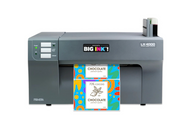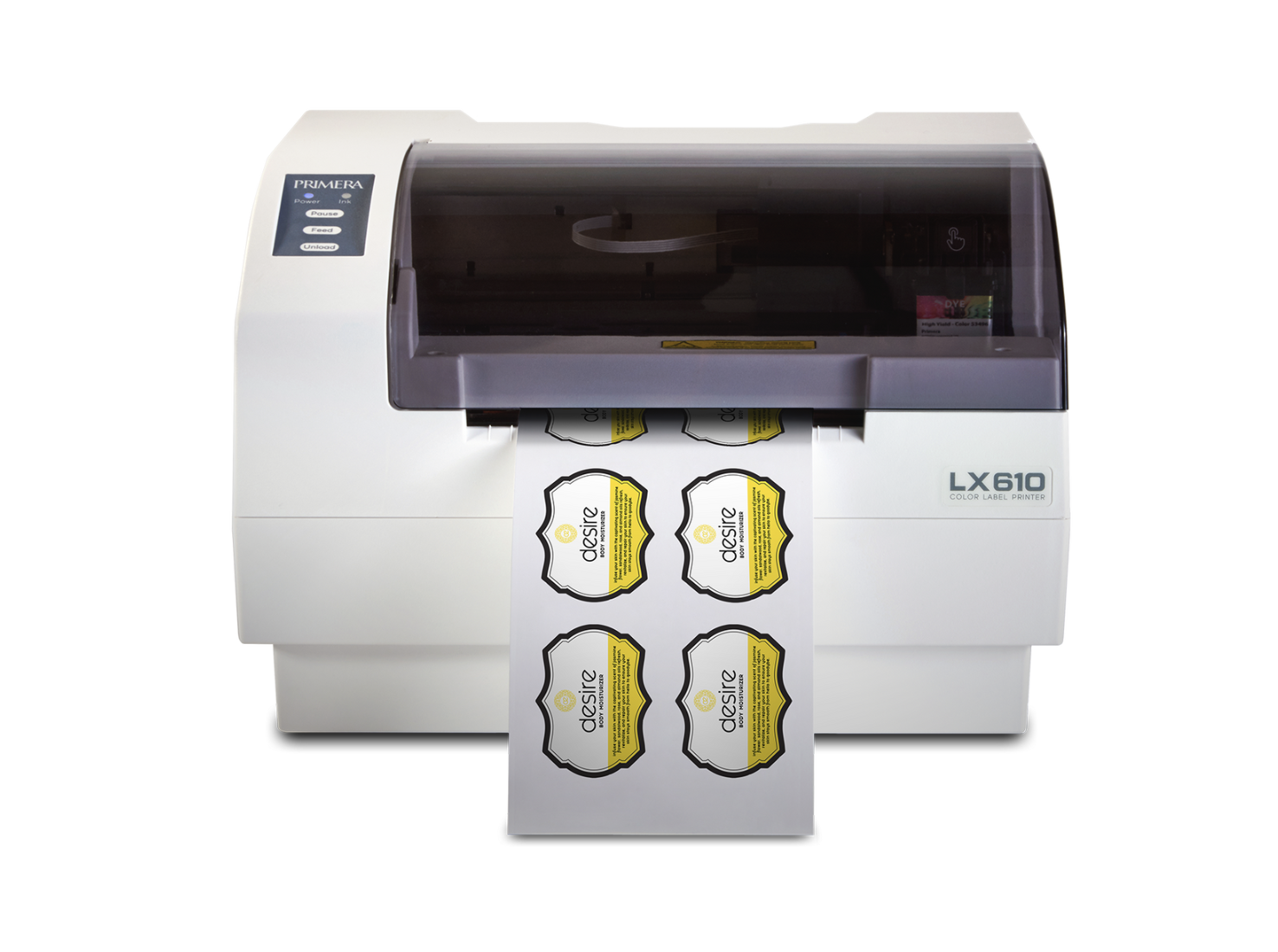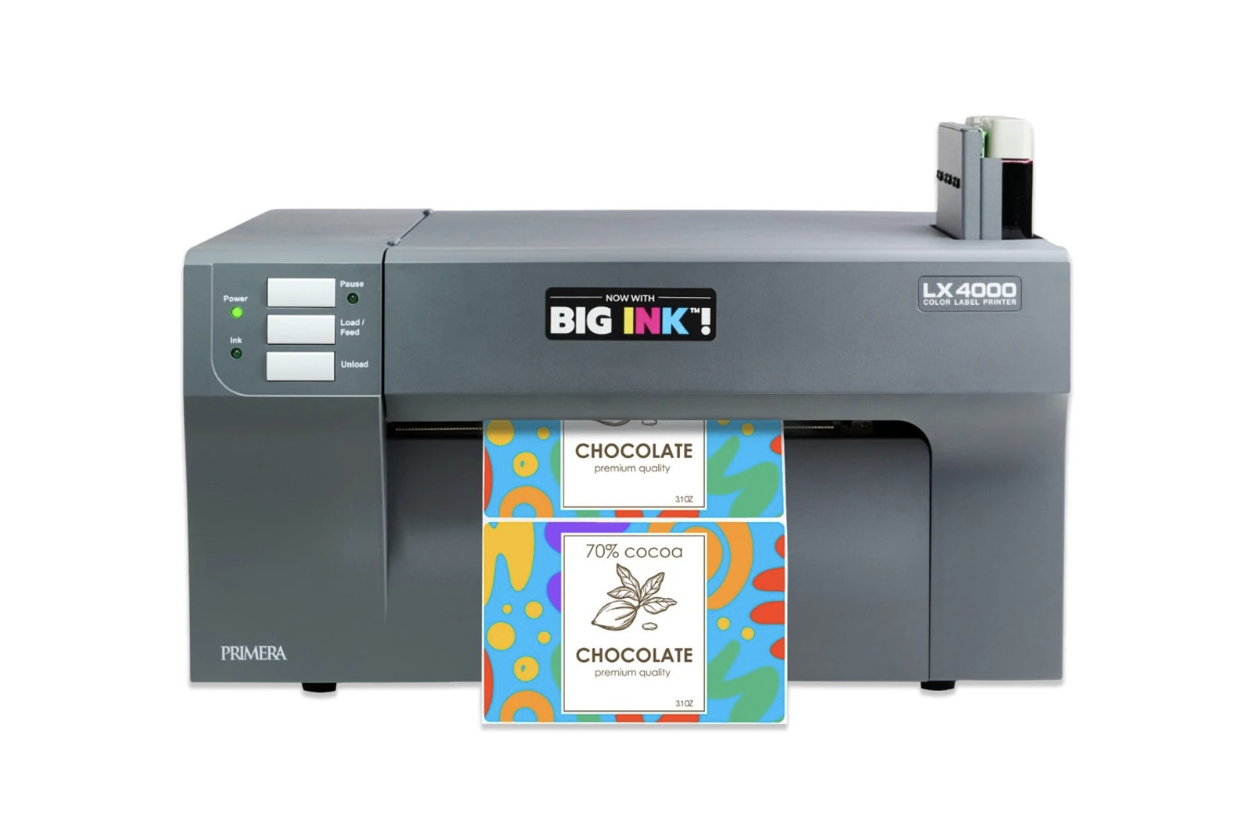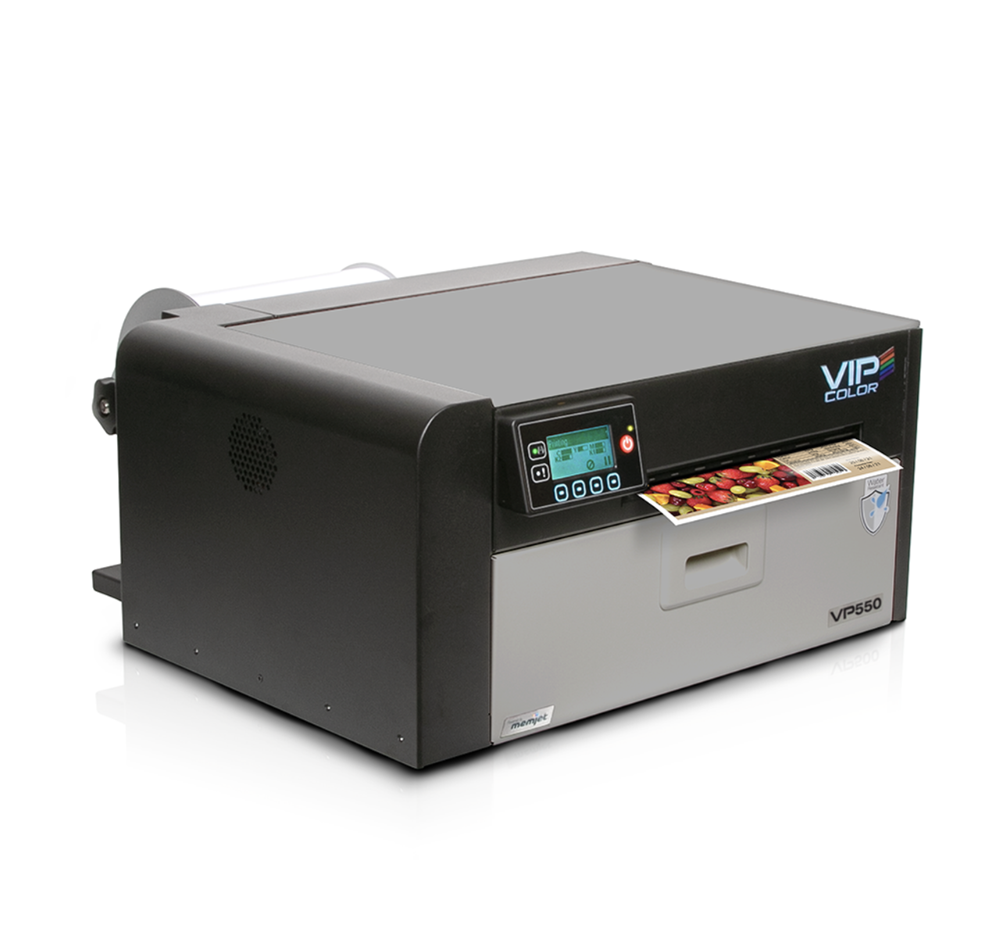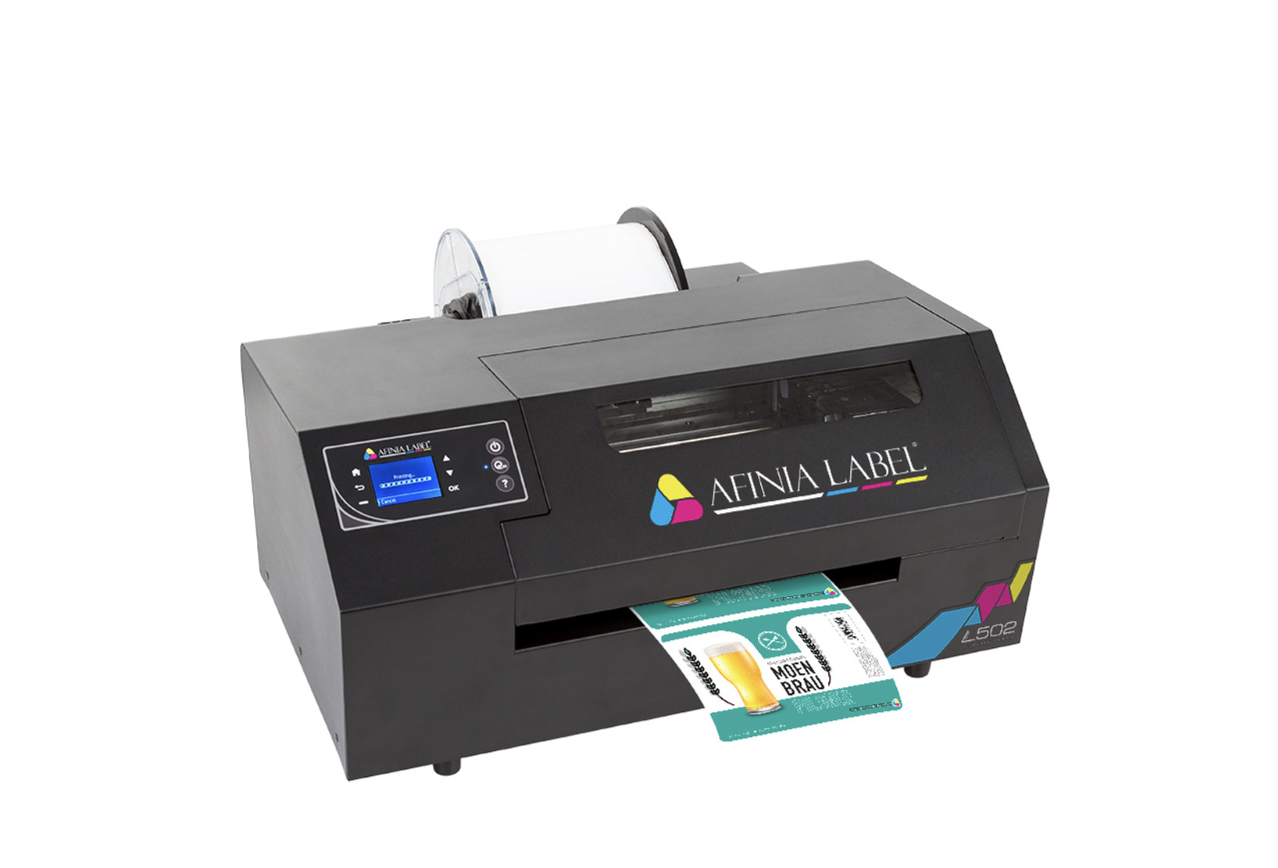5 Best Printer for Product Labels in 2025
11th Jul 2025
When it comes to making your products stand out on the shelf, the right label can make all the difference. But it's not just about design – choosing the best printer for your product labels is key to achieving professional-quality prints that are durable, clear, and visually appealing. Whether you're a small business owner, a growing brand, or a large-scale manufacturer, this guide will walk you through the top printers for product labels in 2025. We'll break down the features, benefits, and costs of each printer, so you can find the perfect match for your unique needs.
From inkjet to laser, material compatibility to print volume, we'll explore everything you need to consider to make an informed decision. Plus, we’ll share tips for achieving high-quality prints and answer common questions that come up when selecting a label printer. Ready to take your product labeling to the next level? Let’s dive in!
What are the Different Printer Types for Label Printing?
Printer selection for label printing depends primarily on two types: inkjet and laser. An inkjet printer sprays minute droplets of ink onto the paper, providing rich and vibrant colours. This makes it ideal for photo-quality labels.
A laser printer, on the other hand, uses a light beam to heat specific areas of paper coated with heat-sensitive toner (powdered ink), producing exceptionally crisp text and graphics. Each type has unique advantages, which shall be explored in detail in the following sections.
Laser vs. Inkjet Printers - Which is the best printer for printing product labels?
The decision between laser and inkjet printers can be a hard one, as both provide quality prints suitable for different types of labels. Laser printers work well with high heat and powdered toner, making them best suited for label sheets that can withstand high temperatures. Their dry ink method ensures ultra-sharp images and text, excellent for creating premium, professional-looking labels with high-resolution barcodes.
Inkjet printers, conversely, are known for their vibrant colour output and versatility. They excel when used with specific materials like inkjet-printable vinyl, which absorbs the wet ink, allowing it to sink in and dry, bringing out high-quality graphics, pictures, and designs. However, excessive heat from laser printers can discolour or melt these materials, emphasizing the need for appropriate printer and material pairing.
Choosing between laser and inkjet largely boils down to three factors:
-
The type of label material you'll use
-
The desired print volume
-
The level of quality you're after.
For large batches of cost-effective, water-resistant labels in medium-quality colours, a laser printer is usually a better choice. If you seek exceptional colour depth and tonal range in small batches, an inkjet printer would be ideal.
What are the advantages of each printer type for different label materials?
Matching printers with compatible label materials can generate a significant difference in the final quality of your product labels. Here's a closer look at how each printer type leverages different materials:
Laser printers- is it the best thermal printer for product labels?
Laser printers are best for use with materials that can endure high heat. Coated and treated label sheets aim to work with the printer's powdered toner efficiently, offering smudge-proof and water-resistant prints, which are crucial for product labels exposed to moisture or varying temperatures. They deliver precise and professional-quality image,s making them ideal for barcode labels, shipping labels, or labels requiring precise text details.
Inkjet printers- is it the best label printer for products?
Inkjet printers are excellent with specialized inkjet-printable materials that absorb wet ink for proper drying. They showcase superior performance on gloss and semi-gloss labels, generating vibrant, photo-like results perfect for product packaging, decorative stickers, and photo labels.
Some brands like Dura Fast Label offer products compatible with both printer types, providing flexibility. Although material choice hugely impacts the print outcome, printer calibration and maintenance also play crucial roles in ensuring consistent quality. Therefore, it's advisable to perform regular cleaning cycles and alignments to maintain optimal printer performance.
Top 5 printers for product labels in 2025
Now, let's dive into our carefully curated list of the top 5 printers for product labels in 2025. Be it for small businesses seeking an economical solution or corporate requirements demanding high-capacity, swift, and standout labels, these printers are sure to suffice.
1. Primera LX910 Colour Label Printer (Dye Ink)- Top pick for Paper Capacity
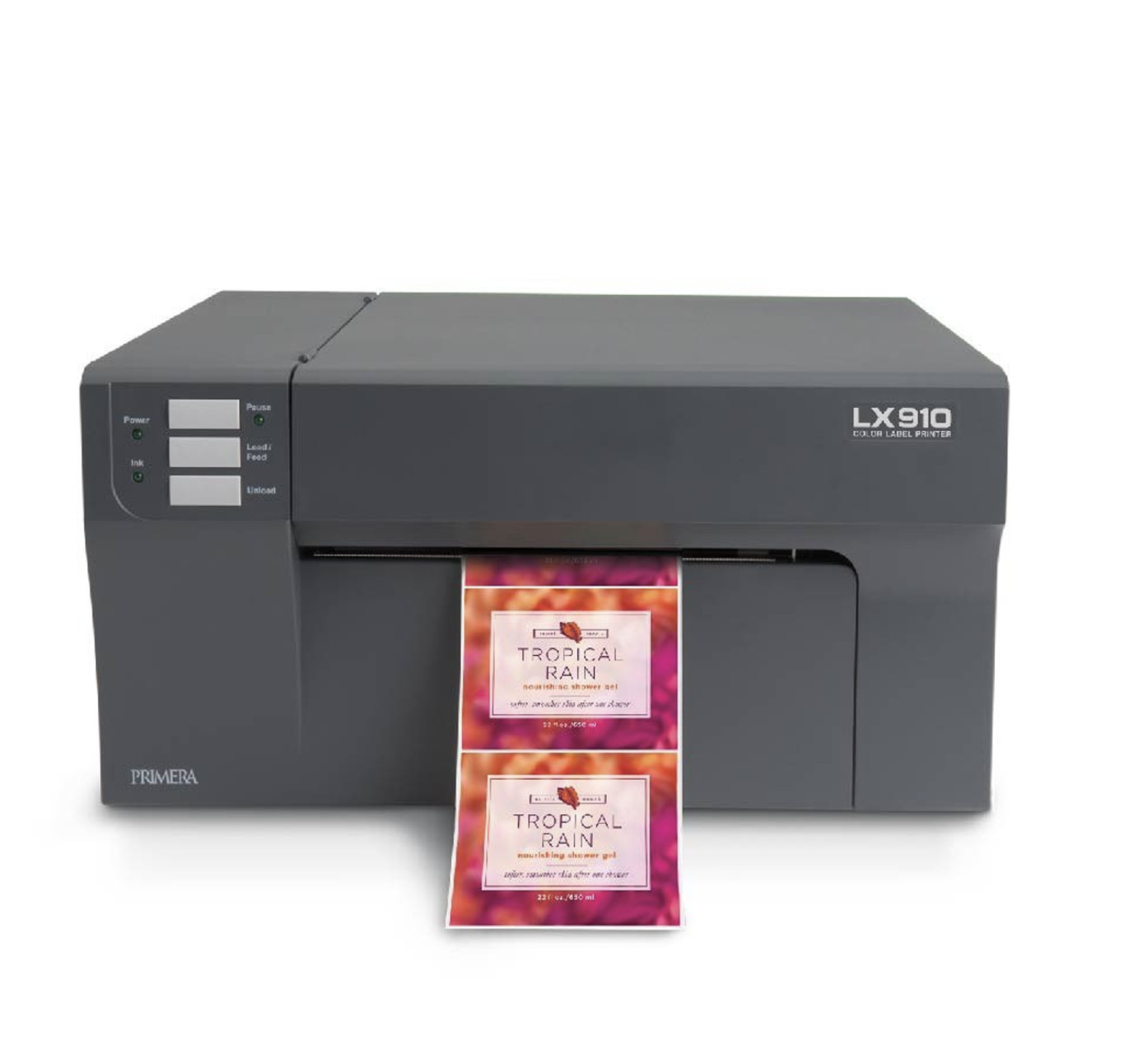
The Primera LX910 Colour Label Printer is a high-performance solution for businesses requiring versatile and high-quality label printing. It features a single tri-colour ink cartridge that supports both dye and pigment inks, allowing users to choose between vibrant colours or durable, water- and UV-resistant labels.
With a print resolution of up to 4800 dpi and speeds reaching 4.5 inches per second, the LX910 efficiently handles labels ranging from 0.5" to 8.25" in width. It's built-in "pizza-wheel" cutter ensures precise label separation, enhancing workflow efficiency.
Priced at approximately $4034 CAD, the LX910 boasts a durable steel casing and low maintenance requirements, as it provides a new print head with each cartridge change, simplifying upkeep and reducing operational costs.
In summary, the Primera LX910 offers businesses a reliable and flexible label printing solution, combining high-quality output with user-friendly features and cost-effective operation.
2. Primera LX610 Colour Label Printer & Cutter: Print and Cut in one Seamless Step
The Primera LX610 (Model 74541) is a unique all-in-one label printer and digital die-cutter designed for businesses that need full-colour, custom-shaped labels without the hassle of separate cutting equipment. It prints in stunning 4800 x 1200 dpi resolution and includes a built-in plotter cutter that can cut any shape or contour directly after printing, making it ideal for short-run, professional-grade label production. Supporting both dye and pigment inks, it adapts to various needs, whether you’re labeling food products, cosmetics, or industrial items.
The LX610 comes with PTCreate Standard software for basic shape design, with an optional Pro upgrade for advanced contour cutting. With a daily output of up to 3,000 labels, label widths up to 5 inches, and a price of around $3955, it’s a powerful, space-saving solution for businesses wanting high-quality labels with minimal post-production steps.
3. Primera LX4000 Dye Inkjet Colour Label Printer: High-Volume Colour Printing, Made Simple
The Primera LX4000 (Model 74433) is a professional-grade dye inkjet colour label printer designed for businesses needing vibrant, high-resolution labels at scale. With print resolutions up to 1200 x 4800 dpi and speeds of 4.5 inches per second, it delivers sharp, full-colour labels up to 8.25 inches wide—perfect for everything from packaging to product branding. The LX4000’s standout feature is its Big Ink™ system, using large, cost-efficient 60 ml tanks and a reusable print head, significantly cutting down ink costs and downtime.
Priced around $4995 CAD, it includes Primera’s ClearView™ ink tank system for easy ink monitoring and supports both Windows and macOS. Built for up to 7,500 labels per day, it’s ideal for businesses that need consistent, high-quality output without the hassle of frequent cartridge changes. If colour, quality, and volume matter to you, the LX4000 is a solid investment.
4. VIPColor VP550 Memjet Color label printer
The VIPColor VP550 Memjet Color Label Printer is priced at approximately $6,600, positioning it as a premium option for businesses seeking high-quality, on-demand label printing.
What sets the VP550 apart from other label printers is its exceptional print resolution of 1,600 x 1,600 dpi, delivering vibrant and crisp labels that enhance brand presentation. Additionally, it boasts enhanced water-resistant dye inks, making it ideal for products exposed to moisture, such as beverages and refrigerated goods. The printer's high-speed printing capability allows for the production of up to 1,000 6"x 4" labels in under 10 minutes, streamlining label production processes. Furthermore, the VP550 features individual 200ml CMYKK ink tanks, reducing replacement costs and improving efficiency.
Whether you're printing artisan product labels or premium packaging, the L502 combines professional results with practical performance, making it a top pick for growing brands.
5. Afinia L502 Colour Label Printer with Dye Inks
The Afinia L502 Colour Label Printer with Dye Inks typically falls within the price range of $2,000 to $2,500, making it one of the most cost-effective options for businesses needing high-resolution, full-colour label printing.
What sets it apart is its DuraPrime Duo Ink Technology, allowing users to switch between dye and pigment inks by simply changing the printhead and ink cartridges, offering unmatched flexibility in a single device. With print resolutions up to 4800 dpi, support for a wide range of media types and sizes, and an industrial-grade steel design, the L502 delivers both exceptional print quality and durability.
Its ability to balance vivid colour output, scalable monthly volumes (up to 20,000 labels), and medium per-label ink costs makes it one of the best all-around colour label printers in its class.
Whether you're printing artisan product labels or premium packaging, the L502 combines professional results with practical performance, making it a top pick for growing brands.
How to Choose the Right Printer for Your Label Needs?
Choosing the right printer requires evaluating your specific label needs, including print volume, label material, and desired quality. While laser printers offer sharp outputs for massive batches, inkjet printers perform well for small quantities, demanding high-quality colour depth. The compatibility of the printer with the desired label materials is crucial, too. Features like single or dual paper trays, auto document feeders, wireless printing, etc., can bring added convenience, increasing efficiency. Assess the aspects that best align with your expectations to decide your optimal printer investment.
1. Assessing Print Quality and Speed
Print Quality: The clarity and colour fidelity of printed labels impact your product's visibility in crowded shelves or e-commerce marketplaces. Ensure your printer supports high DPI resolution, enabling the production of sharp, vivid labels. Laser printers provide precise text details and high-resolution barcodes, while inkjet printers offer rich colour depth and quality images.
Print Speed: If you need to print labels in large quantities rapidly, opt for a printer with a high print speed, measured in pages per minute (ppm). The higher the ppm, the better the printing process. Additionally, look for duplex (double-sided) and multi-sheet printing functionalities that improve efficiency.
Balancing both aspects optimally based on your requirement is vital. A fast printer may compromise on quality, and a printer delivering exceptional quality might not be as swift as needed. Evaluate your scenarios like high-demand periods, detail-oriented designs, and order sizes to make an informed decision.
2. Considering Label Size and Compatibility
Label Size: The maximum media size a printer can handle is another crucial factor to consider. Small-format printers usually support up to standard A4 size, while large-format printers can accommodate wider and longer media. Ensure that your preferred printer can handle the specific label size you require. Some printers also offer roll support, which allows longer print runs of smaller labels.
Compatibility: Ascertain that the printer can cater to the label material you plan to use, be it paper-based, vinyl, polyester, or others. Different materials require different types of inks (Pigment or dye-based inks) to adhere properly, preventing smudges or fading over time. Ensuring compatibility of the printer type, ink type, and label material will guarantee that the printed labels are durable and look professional.
Considering the above aspects, keeping in mind your specific needs, will ensure the printer chosen aligns perfectly with your label requirements, delivering efficient, high-quality outputs.
Practical Tips for Printing High-Quality Labels
Achieving high-quality labels extends beyond owning a great printer. Ensuring optimal printer settings, proper alignment of labels, and regular maintenance of your printer can significantly increase the output quality and longevity of your printed labels. Below, we delve deeper into these practical tips that can effectively boost your product labels' look and feel, enhancing their appeal on your products.
Aligning Labels Properly for Optimum Output- Discovering the best product label printer
Proper label alignment plays a critical role in achieving precise prints. Here's a step-by-step procedure to ensure your labels align correctly for the best results:
-
Use the Correct Template: Utilize size-specific templates that match the labels you aim to print. Avery.com and several other online platforms provide precise templates ensuring proper alignment.
-
Adjust Paper Scale: Setting the paper scale to "100%" or "Actual Size" will make sure the labels print at correct dimensions, avoiding misalignment.
-
Print a Test Sheet: Always run a test print on plain paper first and compare it with the label sheet, holding them to a light source. This allows you to verify the alignment before final printing.
-
Make Adjustments: If the labels don't align as desired, adjust your design accordingly and retest until satisfied.
Practicing such precautions enables consistency in sizing and alignment, resulting in professional-looking labels every time.
Maintaining Your Printer for Longevity
A well-maintained printer not only assures top-notch print quality but also extends the printer's lifespan significantly. Here are some tips to keep your printer in peak condition:
-
Regular Cleaning: Over time, dust and debris can accumulate in printers, affecting print quality. Regular cleaning, especially focused on the printhead and roller, can preserve the printer's functionality.
-
Proper Ink/toner Storage and Handling: Store ink or toner cartridges in a cool, dry place to prevent drying or clotting. Ensure not to touch the chip on a cartridge while installing, as it can affect printer communication.
-
Regular Software Updates: Up-to-date printer drivers and firmware can aid in resolving potential issues, improving printer performance.
These practical tips help enhance print quality while ensuring durability, lowering maintenance costs, and keeping your label printing operation running smoothly.
Ready to take your Product Labeling to the next level with DuraFast Label Company?
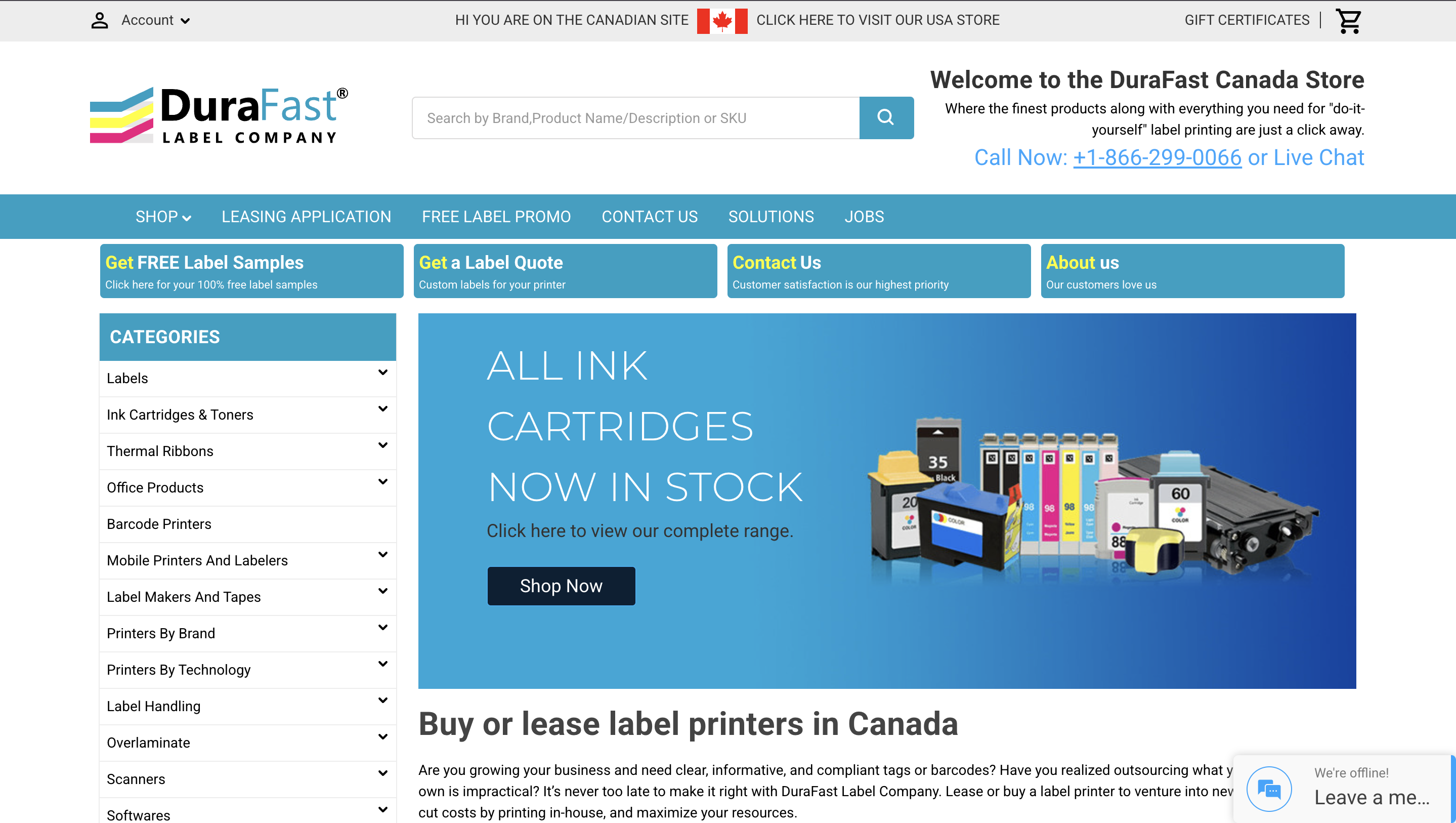
Finding the right printer is more than just a necessity – it’s a game-changer for your brand identity. Whether you're looking for something budget-friendly like the Epson EcoTank ET-3850, a fast performer like the HP OfficeJet Pro 8034e, or a photo-quality pro like the Canon Pixma Pro-100S, the perfect printer is out there for your business.
Here at DuraFast, we’re all about making sure you get the best results every time, with printers designed to meet your needs – from high-volume printing to superior colour precision. Our experts are ready to guide you to the perfect match.
Why settle for anything less than top-notch labels? Call us today and let’s find the right printer for your business!
Frequently Asked Questions
Can I use any printer to print product labels?
Yes, theoretically, both laser and inkjet printers can be used to print product labels. However, the type of labels you intend to print and the volume at which you need to print can dictate the most suitable printer type for you.
Is it cost-effective to print your own labels?
Absolutely! Investing in a good printer and printing your labels can remarkably minimize expenses associated with outsourcing label printing. With features like large paper capacities, automated ink ordering, or refillable ink tanks, businesses can further economize their label printing processes.
What should I look for when buying label sheets for a specific printer?
When selecting label sheets, consider the printer type (laser or inkjet), as some label materials are formulated to work best with specific printer types. Additionally, ensure that the label size is compatible with your printer’s maximum paper size capability.
